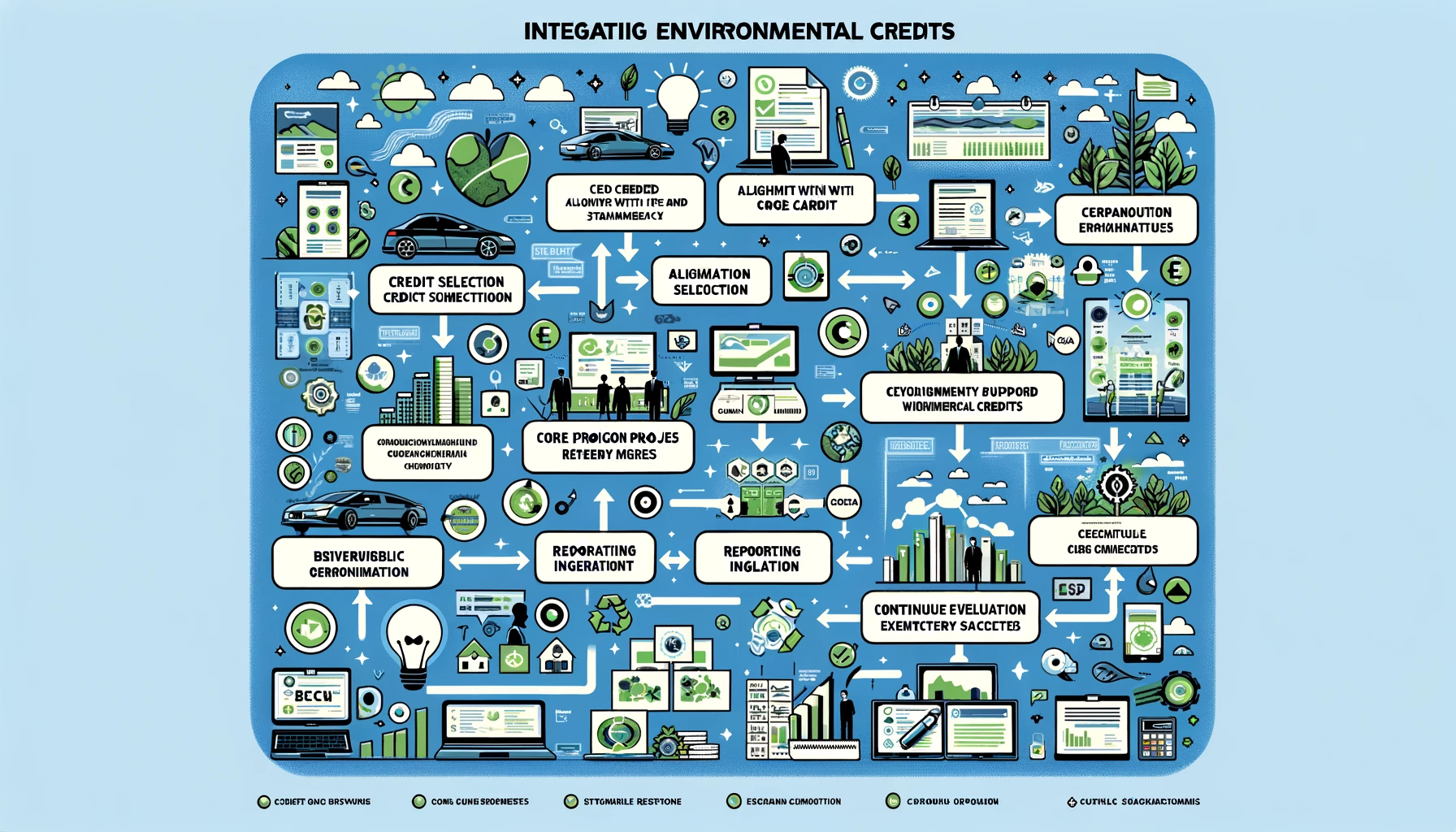
Objective
This section elucidates how environmental credits can be seamlessly integrated into sustainability reports, ensuring alignment with the Voluntary Carbon Market Integrity (VCMI) guidelines and core carbon principles. It aims to bolster sustainability reporting, demonstrating how environmental credits serve as crucial elements in fulfilling Science Based Targets Initiative (SBTi) goals.
Process Diagrams for Integration
Step 1: Credit Selection and Strategy Definition
- Begin with selecting the type of environmental credits that align with your company’s sustainability goals. Consider carbon credits, biodiversity credits, and renewable energy certificates based on your specific SBTi-aligned strategies.
- Establish a clear strategy on how these credits will be utilized to offset emissions, enhance biodiversity, or support renewable energy projects within your sustainability framework.
Step 2: Alignment with VCMI and Core Carbon Principles
- Ensure the credits adhere to VCMI’s stringent quality and integrity criteria. This includes verification standards, additionality, permanence, and avoidance of double counting.
- Cross-reference with core carbon principles to validate that the credits contribute effectively to global carbon reduction efforts, meeting the highest environmental integrity and impact standards.
Step 3: Reporting Integration
- Integrate information about the procurement, utilization, and impact of environmental credits into your sustainability reporting. This includes detailing the selection process, the projects supported, and the resultant environmental benefits.
- Follow guidelines from GRI, SASB, TCFD, and CSRD/ESRS for comprehensive reporting that satisfies global standards and stakeholder expectations.
Step 4: Continuous Evaluation and Reporting
- Implement a system for the ongoing assessment of the environmental credits’ impact, ensuring they contribute meaningfully towards your SBTi targets.
- Report transparently on the progress, challenges, and outcomes of incorporating environmental credits into your sustainability strategy, reinforcing stakeholder trust and demonstrating a commitment to robust environmental stewardship.
Key Takeaway
Integrating environmental credits into sustainability reports is not just about offsetting emissions but about making strategic investments in global sustainability efforts. By adhering to VCMI guidelines and core carbon principles, companies can ensure their sustainability reporting is impactful, credible, and aligned with the latest climate science endorsed by SBTi. This process not only strengthens your company’s sustainability reporting but also showcases a tangible commitment to achieving global sustainability goals.
Visual Enhancements
- Process Diagrams: Detailed flowcharts illustrating the step-by-step process of integrating environmental credits into sustainability reports, highlighting key actions and decisions along the way.
- Case Studies: Examples of companies that have successfully integrated environmental credits into their sustainability reports, including the types of credits used, the projects supported, and the impact achieved.
By following these guidelines, companies can effectively incorporate environmental credits into their sustainability reports, ensuring they contribute significantly to SBTi targets and broader sustainability goals.